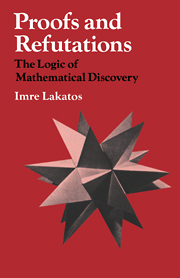Author's Introduction
Published online by Cambridge University Press: 05 June 2012
Summary
It frequently happens in the history of thought that when a powerful new method emerges the study of those problems which can be dealt with by the new method advances rapidly and attracts the limelight, while the rest tends to be ignored or even forgotten, its study despised.
This situation seems to have arisen in our century in the Philosophy of Mathematics as a result of the dynamic development of metamathematics.
The subject matter of metamathematics is an abstraction of mathematics in which mathematical theories are replaced by formal systems, proofs by certain sequences of well-formed formulae, definitions by ‘abbreviatory devices’ which are ‘theoretically dispensable’ but ‘typographically convenient’. This abstraction was devised by Hilbert to provide a powerful technique for approaching some of the problems of the methodology of mathematics. At the same time there are problems which fall outside the range of metamathematical abstractions. Among these are all problems relating to informal (inhaltliche) mathematics and to its growth, and all problems relating to the situational logic of mathematical problem-solving.
I shall refer to the school of mathematical philosophy which tends to identify mathematics with its formal axiomatic abstraction (and the philosophy of mathematics with metamathematics) as the ‘formalist’ school. One of the clearest statements of the formalist position is to be found in Carnap [1937].
- Type
- Chapter
- Information
- Proofs and RefutationsThe Logic of Mathematical Discovery, pp. 1 - 5Publisher: Cambridge University PressPrint publication year: 1976



